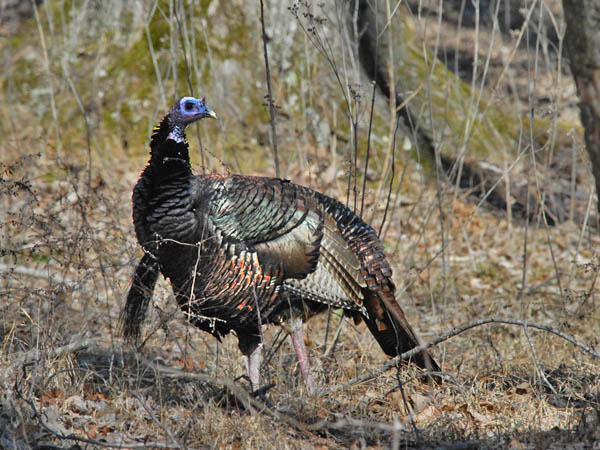
John Phillips | April 30, 2012
The gobbler strutting in the field is often the easiest turkey to find but can be the most-difficult bird to set up on and call, due to his often having hens with him. Naturally that tom thinks a hen should come to him.
* A daylight field gobbler is a tom that flies from the roost at daylight, remains in a field all day long and then flies back to the roost at dark. If the hunter reaches the field before daylight and takes a stand 10-15 yards in the woods off the edge of the field, he can confuse a gobbler and make him come to his call. Once the hunter has taken a stand, he can begin to call to the gobbler before daylight and before the tom has stared gobbling or any other hens have awakened. The hunter should begin his calling just as light is beginning to glow in the east. When the bird wakes-up and hears a hen calling to him from the field before fly-down time, he wonders if there’s a new hen moving into his area. He’ll often fly-down from the roost to meet her before the other hens wake-up.
* Hens will leave a gobbler by 10:00 am to return to their nests, especially late in the season, which leaves the gobbler all alone in the field. If the hunter takes a stand 30-40 yards off the field and begins calling and using light yelps, clucks and purrs, he can get the gobbler’s attention and make the tom believe there’s one hen left to breed before the days over.
* The hunter may have a chance to take a subordinate bird, if there are three or four gobblers in a field with a group of hens. Remember that since the boss gobbler claims the right to breed the hens, subordinate toms may not have had an opportunity to breed any of the hens in the field. Therefore, if you set-up fairly close to one of these subordinate gobblers that’s not strutting, you may be able to call him to your blind.
Walking and Talking Gobblers:
There’s nothing more frustrating than to find a good gobbling bird, call to him and then listen to him walk off. In many instances, these turkeys are call-shy, because they’ve listened to so-much calling from other hunters that they know what a turkey call sounds like and don’t want any part of it. Or, maybe walking and talking gobblers just don’t like hens. They’ll gobble well but won’t come to calling. Two methods will help you bag one of these walking and talking gobblers.
* Circle the gobbler, and take a stand in the woods where you think the turkey is going. Don’t call to the turkey anymore, and the tom should come in silently. For some people, this is a boring way to hunt, but this technique can be successful.
* Use two hunters. The first hunter takes a stand close to where the turkey’s gobbling and then calls to the tom, just enough to keep the bird gobbling. The other hunter circles the turkey, gets in front of the tom and keeps-up with his location, as the tom answers the caller. This tactic too will pay gobbler dividends.





























